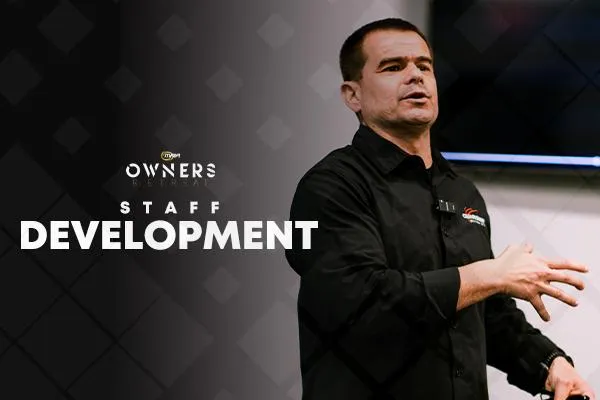
THE MAIA BLOG

Building a Strong Team: The Five Steps to Staff Development
Growing a high-performing team and creating future leaders isn’t just a matter of hiring the right people—it’s about nurturing their development through intentional and structured processes. John Maxwell’s principle of staff development offers a straightforward framework for this growth. By following these five steps, you can cultivate a culture of learning, empowerment, and leadership within your organization. Let’s break down these steps and see how they can transform your team.
1. I Do It – Master the Skill Yourself First
Leadership starts with you. If you expect your team to excel at a skill, you must first demonstrate mastery of it. Whether it’s a technical task, a customer interaction, or a strategic decision, your ability to model excellence sets the standard.
Why It Matters:
Builds credibility with your team.
Demonstrates the level of expertise expected.
Establishes you as a leader who leads by example.
Action Tip: Commit to continuous personal improvement. If there’s a skill you expect your team to develop, invest time in mastering it first.
2. I Do It, and You’re With Me – Teach While Demonstrating
Once you’ve mastered a skill, the next step is to bring your team alongside you. Show them how it’s done while explaining your thought process. This is the foundation of mentorship—leading by doing and allowing others to observe and learn.
Why It Matters:
Provides a hands-on learning experience.
Encourages two-way communication and immediate feedback.
Builds confidence in your team members as they see success modeled.
Action Tip: Use real-world scenarios to teach. For example, involve a team member in a sales call or a project meeting and explain the decisions you make in real-time.
3. You Do It, and I’m With You – Guide and Support
Now it’s their turn. Let your team members take the lead while you provide support. You’re there to guide, correct, and encourage, but the responsibility of execution lies with them.
Why It Matters:
Builds accountability and ownership.
Identifies areas where additional training may be needed.
Boosts their confidence in their ability to perform.
Action Tip: After the task, debrief together. Discuss what went well and what could improve. This reflection cements the learning experience.
4. You Do It – Let Them Take Ownership
At this stage, your team member should be confident enough to execute the task independently. Your role shifts from active guide to observer, allowing them to showcase their capability.
Why It Matters:
Encourages independence and initiative.
Allows team members to develop problem-solving skills.
Frees you to focus on higher-level responsibilities.
Action Tip: Give them full responsibility for the task, but check in periodically to provide support if needed. Trust their ability to deliver.
5. You Do It, and Someone Else Is With You – Empower Them to Mentor Others
The final step is all about paying it forward. Now that your team member has mastered the skill, it’s their turn to teach someone else. This creates a ripple effect of learning and leadership development across your organization.
Why It Matters:
Fosters a culture of mentorship and collaboration.
Multiplies the impact of your training efforts.
Prepares your team for future leadership roles.
Action Tip: Encourage team members to take ownership of mentoring. Provide them with resources and guidance to be effective teachers themselves.
Growth Is a Cycle
These five steps are not a one-time process—they’re a cycle. As your team grows, new skills and challenges will arise, requiring you to revisit this framework. Each iteration strengthens your team, builds confidence, and equips future leaders.
By practicing this cycle consistently, you’ll not only grow individuals but also create a resilient, empowered, and high-performing team. Remember, leadership is about multiplication—invest in others so they can invest in others. That’s how you create a legacy of growth and success.
Are you ready to lead by example and develop leaders within your organization? Start with Step 1 and watch your team thrive!
CONTACT US TODAY!

